

Home
Desert Plants
Family Hikes
Solar Power
Energy
Desert Animals
Animal Tracks
Native People
Explorer Guide
Desert Birds
Family Drives
Sculpture Tour
Explorer Quiz
Test your knowledge of the Anza-Borrego Desert. Read each question carefully, decide on your answer, and then click Show me the answer! to see the correct answer.
Good Luck! All of the answers can be found in the Just For Kids section of our website.

If you chose the Giant Bird Aiolornis, you are correct! Dinosaurs, like Tyrannosaurus Rex, never lived in the Borrego Valley and the Ostrich is a giant bird that lives in Africa. There was never a bird called the North American Ostrich.
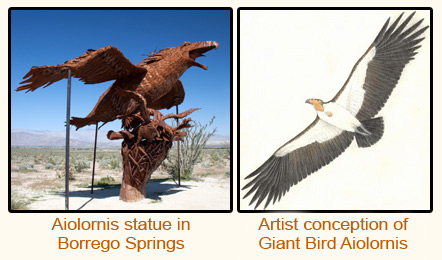
Aiolornis likely became extinct around 9,000 – 13,000 thousand years ago, a time when many large animals in North America went extinct. This time is called “The Megafauna Extinction” because many animals went extinct at this same time. It also marked the end of the last Ice Age!
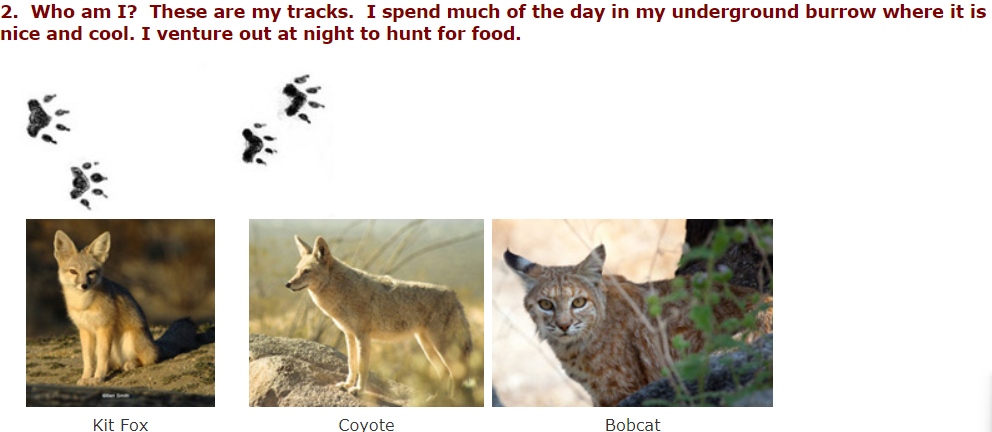
If you chose Kit Fox, you are correct! Kit foxes spend much of the daylight hours in their burrows. They come out at night to hunt. The animal tracks that are shown here are the tracks of a kit fox.
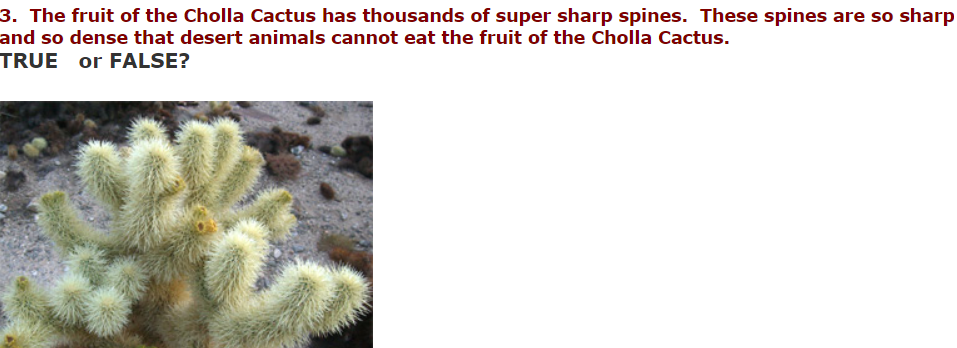
The correct answer is FALSE. Many different animals eat the fruit of the Cholla Cactus. This is a picture of an antelope squirrel enjoying a cactus fruit.
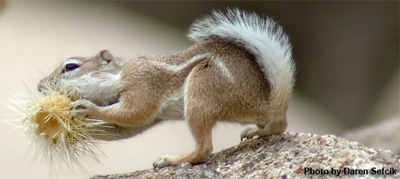
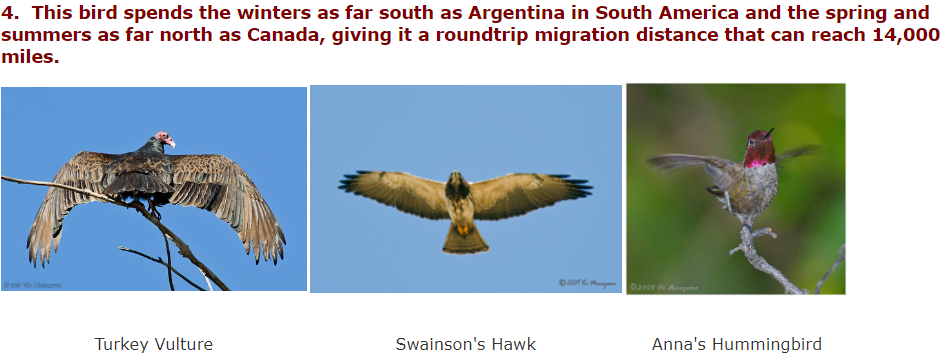
The correct answer is Swainson’s Hawk. Swainson’s Hawks have a very long migration journey, from South America all the way north to Canada. On their way north, during February and March, many Swainson’s Hawks travel through the Borrego Valley. They can be seen circling in the air, sometimes many dozens at one time.
Turkey Vultures also migrate to the south in the winter, sometime to Central America. But not as far as the Swainson’s Hawk.
Although many hummingbirds do migrate, many Anna’s Hummingbirds stay in the same area year round, or just migrate a short distance.

The correct answer is the Kangaroo Rat. This desert animal is so well adapted to the desert that it’s internal organs can actually make water from the dry food that it eats.
Both the Black-tailed Jackrabbit and the Antelope Squirrel are also adapted to the desert. They can get most of the water they need from the moisture in the plants that they eat. But they need that moisture. They could not survive for long on just dried foods with no source of water.
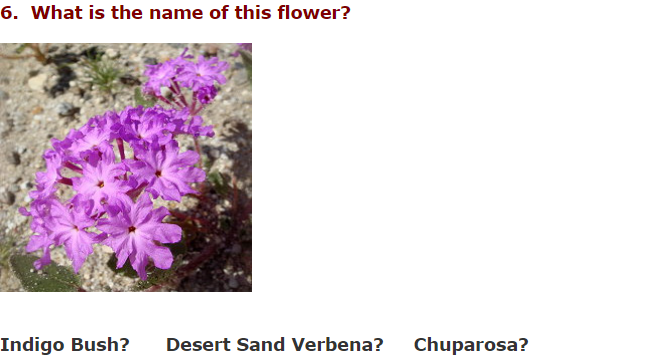
This flower shown above is Desert Sand Verbena. In the springtime the desert surrounding Borrego Springs can be covered with beautiful sand verbena, especially in years when there has been good winter rains.
This flower is Indigo Bush.

This is Chuparosa.
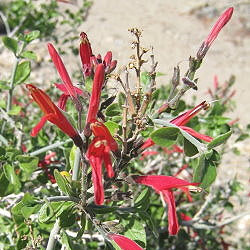

The brittlebush plant is the Producer. As a plant, it produces it’s own food.
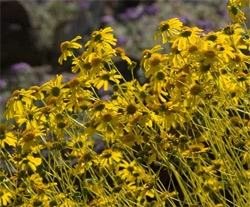
The Desert Cottontail is the Herbivore because it eats plants.
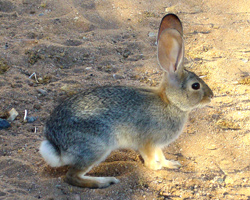
The Coyote is the Omnivore because it eats both plants and animals.
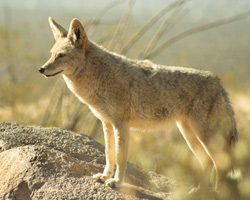
The Mountain Lion is the Carnivore because it eats other animals.
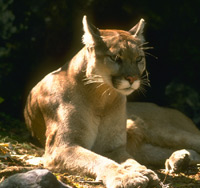
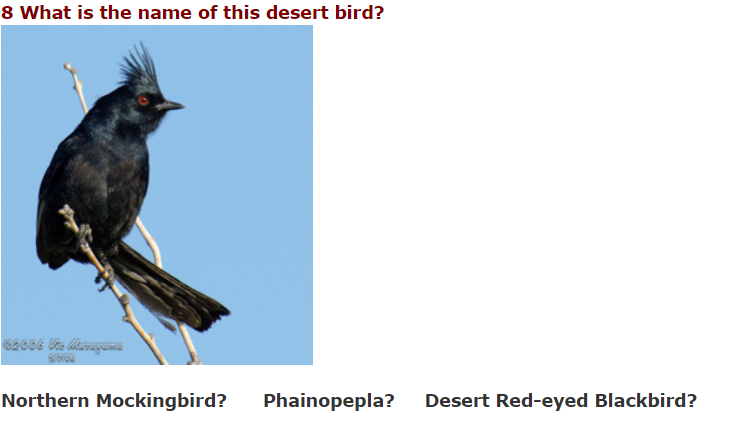
The correct answer is Phainopepla ( Fain – o – pep – la). The Phainopepla is a beautiful desert bird that can be found in the southwestern United States and Baja California, Mexico.
This is a picture of the Northern Mockingbird, which also can be seen in Anza-Borrego.
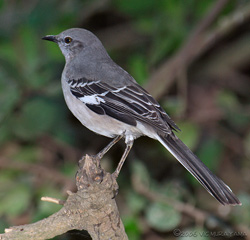
Sorry, but there is no such bird as the Desert Red-Eyed Blackbird.
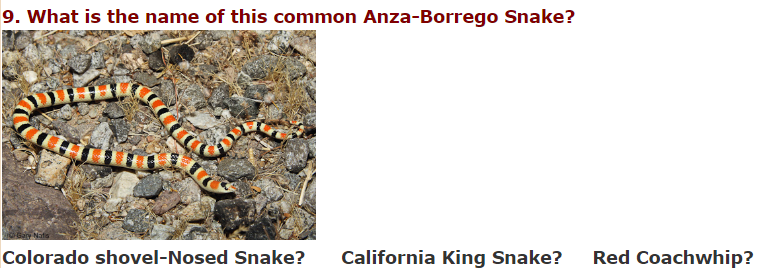
This beautiful small snake is the Colorado Shovel-Nosed Snake. Adults are just 10 – 17 inches in length. The Shovel-Nosed Snake burrows in the sand and feeds on insects, scorpions, spiders, centipedes, and insect larvae. This snake in not harmful to humans in any way.
This is a picture of the California King Snake in the Anza-Borrego Desert. The California King Snake is much larger than the shovel-nosed and can grow up to 85 inches in length. This snake feeds on small mammals, lizards, and other snakes, including rattlesnakes. It is found in many different habitats, forests, desert, marshes, along the coast, and open fields. The color of the snake can vary depending on it’s habitat. This snake is not harmful to humans in any way.
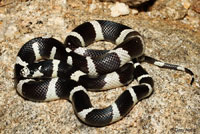
This is a picture of the Red Coachwhip, also called the Red Racer. This snake can grow as long as 100 inches. The Coachwhip eats birds, bats, other snakes, lizards, along with toads and other amphibians. This snake is not harmful to humans in any way.
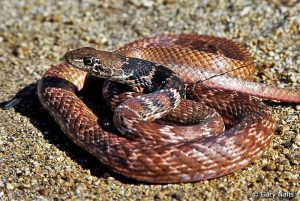
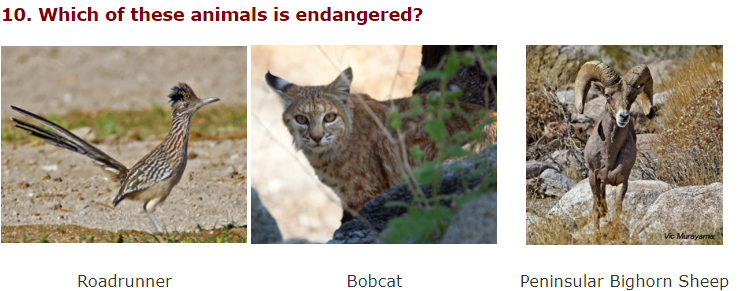
The Peninsular Desert Bighorn is a federally endangered species. This means that there are not very many wild sheep in the areas where they once lived and people are doing everything that they can to help this animal survive and reproduce. In spite of being rare, this beautiful animal can sometimes be seen in the steep rocky canyons of the Anza-Borrego Desert and the mountain ranges around Palm Springs.
The Roadrunner is not endangered. It is commonly seen ( often crossing the road) all around Borrego Springs.
The Bobcat is not endangered. There are many bobcats living over most of the United States, including Anza-Borrego.
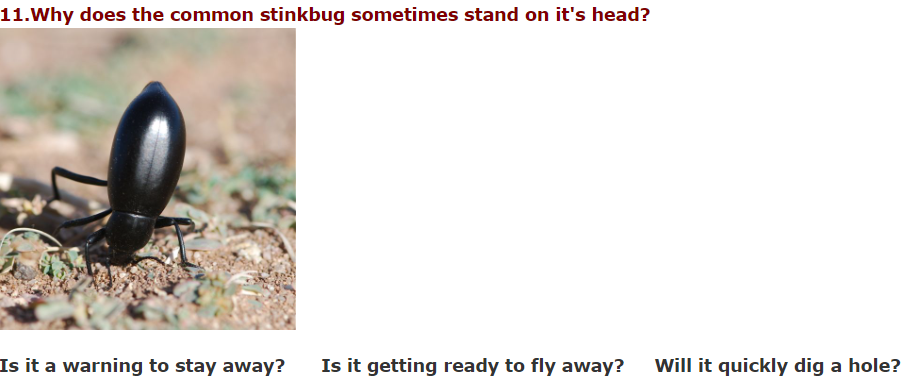
The Stinkbug is the skunk of the insect world. Just as a skunk turns it’s rear to an enemy to warn that it is about ready to spray, the stinkbug does the same thing. The smell is repulsive to most predators and it tastes as bad as it smells. The smell is enough to protect it in many, but not all cases.
The Stinkbug has wings but they are fastened tight to it’s body and it cannot fly. Although the stinkbug will go underground when it is hot or cold, it will use a burrow or hole that already exists, like the burrow of a rodent, rather than digging it’s own hole.

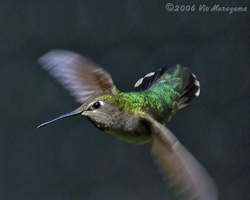
Humminbirds
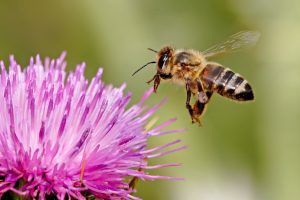
Bees
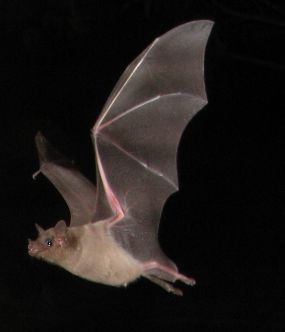
Bats
The correct answer is “All of them.” Hummingbirds, bees, and nectar eating bats are all important pollinators. Flowers contain a dust called “pollen” which must be spread from flower to flower and from plant to plant for the plant to reproduce itself. This is exactly what hummingbirds, bees, butterflies, and nectar eating bats do. They come for the sweet nector, They get dusted with pollen in the process. And they carry this dust around with them as they feed.


